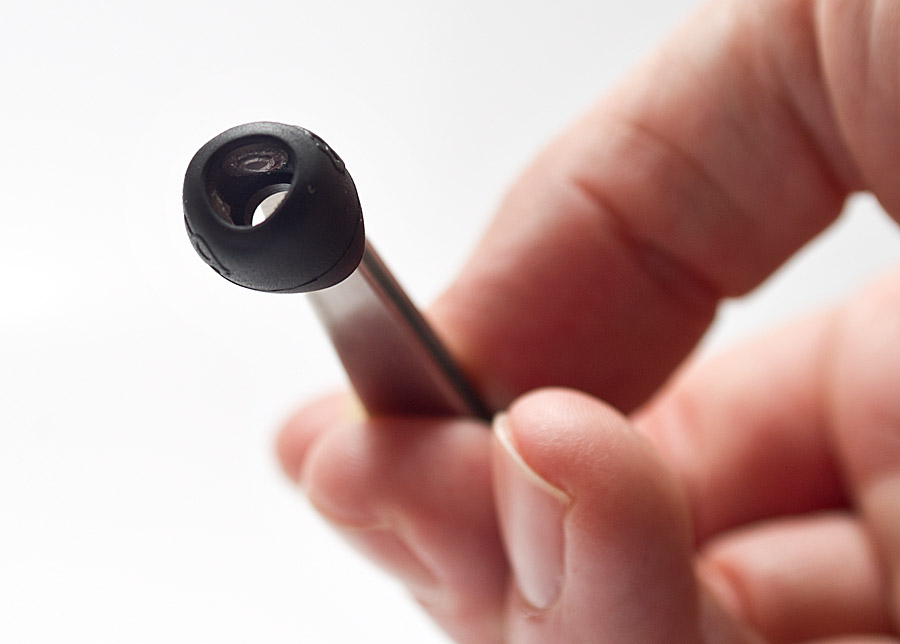Through the Diaphonic Lens Page 2

The answer, according to Ambrose, is to introduce a second membrane into the system, in order to take the pressure in the eardrum's place. That notion has begun to produce devices, two of which - the Ambrose Diaphonic Ear Lens (ADEL) and the Asius Diaphonic Pump - Sound+Vision got a chance to examine during a layover on Ambrose's trip to London this past week for the 130th annual AES convention.
Ambrose's ADELs employ a 2.5-micron thick polymer membrane (the composition of which he wasn't at liberty to reveal), that functions by responding to changes in sound pressure level, "sacrificing" itself to save the eardrum. In place of the sealed canal, the lens creates an environment that, as Ambrose explains, "appears to the eardrum - and to the listener - as if it's open." With the flexible seal in place, the ADEL reroutes acoustic energy (which would otherwise be trapped into acting as a "piston" in a traditional in-ear monitoring system) into the walls of the ear canal, where it makes its way to the cochlea via bone conduction, as it would during open-era listening.
The ADEL currently comes in two flavors - a "balloon" completely surrounding a driver unit, with the membrane replacing the entire structure of a traditional earphone, both the plastic, metal, or wooden housing and eartip; and a retrofit to existing eartips, in which small vent holes are drilled into the collar that fits around an in-ear phone's driver unit, then covered with small sections of membrane.
The diaphonic pump is a subminiature unit that can be mounted in line or on the tiny drivers used in earphones; in the balloon units it turns the otherwise wasted energy left over by the moving driver into inflation pressure to keep the membranes seated in the ear canals.
An in-the-works "auto-insertion" design (video here) combines the concepts, packing an extensible balloon, driven by an in-line diaphonic pump, into a housing that uses a standard eartip; the listener inserts the phone as they would a standard in-ear monitor, and the balloon emerges on playback, sealing the ear canal and protecting the eardrum from excessive pressure.
I'd been intrigued by a discussion Ambrose had with Joshua Chamot of the National Science Foundation (Asius' work was funded, in part, by an NSF grant), in which he'd mentioned that beyond the health, comfort, and safety benefits of the ADEL approach, it resulted in a wider soundstage, better frequency response, and the ability to listen at a lower overall level - a set of earphone holy grail attributes we're always looking out for. So we set up a meeting.
- Log in or register to post comments




















































